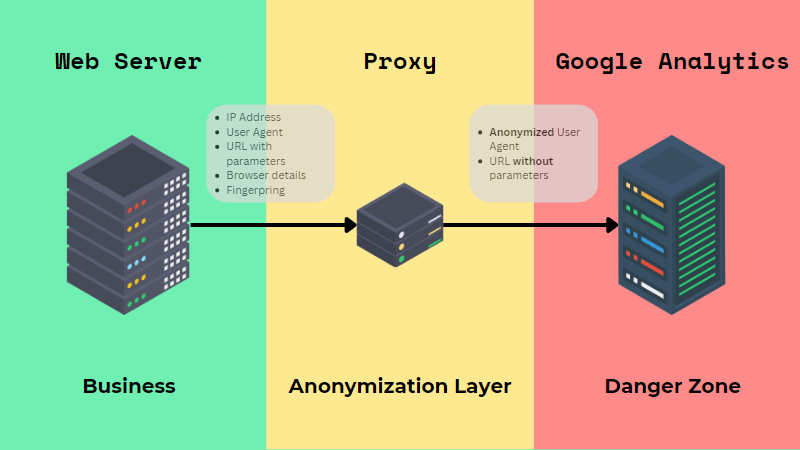Browsing the Complexities of Data Collection Limitations in Google Analytics: What You Required to Know
Beneath its apparently simple user interface lie intricacies that can impact the precision and dependability of the data it provides. Recognizing the ins and outs of data collection limitations in Google Analytics is vital for making educated decisions based on the understandings derived from the system.
Data Discrepancies in Google Analytics
Periodically, data disparities might arise in Google Analytics, requiring a comprehensive understanding of the platform's details to efficiently deal with and rectify these inconsistencies. These discrepancies can come from numerous sources, such as implementation problems, data sampling, filters, or also robot website traffic. One usual reason for data incongruities is discrepancies between information gathered by means of JavaScript monitoring code and information imported from other resources like Google Ads or Look Console.
To deal with these disparities, it is essential to very first carry out an extensive audit of your monitoring configuration. Confirm that the monitoring code is correctly executed on all pages, look for any kind of filters that could be altering the data, and make sure that there are no redirects or other technical problems conflicting with information collection. Additionally, familiarize on your own with usual pitfalls, such as cross-domain tracking mistakes or misconfigured goals.
Tracking Difficulties and Solutions
Given the intricacies of information disparities that can arise in Google Analytics, resolving monitoring challenges and carrying out efficient options ends up being critical for guaranteeing accurate and reliable information evaluation. To overcome this, implementing customer ID monitoring can assist connect communications across various devices under one individual identifier, providing a much more holistic sight of individual behavior.
An additional tracking challenge originates from advertisement blockers and privacy laws, which can impede the collection of accurate information (What Data Does Google Analytics Prohibit Collecting?). Solutions to this consist of carrying out server-side tracking, which bypasses client-side constraints, and valuing user privacy choices by giving clear opt-in devices for information collection

Comprehending Testing in Reports
Tasting in reports offers a method for analyzing huge datasets successfully while preserving statistical significance. In Google Analytics, tasting happens when the volume of information quized surpasses a specific threshold, bring about the system examining only a portion of the information to supply insights. While tasting can accelerate report generation and reduce handling demands, it is crucial to understand its ramifications on the accuracy and dependability of the outcomes.
When dealing with sampled information, it's necessary to think about the possible margin of error that may develop due to analyzing just a part of the full dataset. The accuracy of the understandings originated from helpful site sampled records might vary, and users should interpret the findings with caution, particularly when making data-driven decisions based upon these reports.
To navigate tasting in Google Analytics properly, individuals can discover choices such as readjusting the sampling degree, utilizing custom-made report setups, or leveraging Google Analytics 360 for greater data limits and even more precise coverage capacities. By comprehending the subtleties of tasting in reports, users can make informed decisions and draw reliable final thoughts from their information analysis efforts.
Influence of Cookie Deletion on Data

Additionally, cookie removal can skew group and rate of interest information, as Google Analytics relies upon cookies to classify users based upon their searching patterns. Without this details, marketing professionals may have a hard time to create targeted campaigns that reverberate with their audience. To alleviate the influence of cookie removal, services can encourage individuals to opt-in for information monitoring, use various other tracking methods like user IDs, and routinely check data inconsistencies to make certain data stability in Google Analytics.
Enhancing Information Precision With Filters
To boost the precision and reliability of information in Google Analytics, implementing filters is a crucial strategy for enhancing data precision. Filters make it possible for customers to filter through and fine-tune the data gathered, guaranteeing that image source exact and just pertinent details is included in the evaluation.
Filters not only help in excluding unwanted data but also enable for the customization of sights to concentrate on particular sectors or patterns of individual communications. In conclusion, making use of filters in Google Analytics is essential for enhancing information accuracy and making sure that educated decisions are made based on trusted information.
Final Thought
In conclusion, navigating the intricacies of information collection restrictions in Google Analytics calls for a deep understanding of data inconsistencies, tracking obstacles, sampling in records, the influence of cookie deletion, and making use of filters to enhance data precision. By resolving these obstacles and utilizing suitable options, organizations can make certain the dependability and accuracy of their information evaluation for informed decision-making.
One typical factor for information inconsistencies is discrepancies between information accumulated using JavaScript monitoring code and information imported from various other resources like Google Ads or Search Console. What Data Does Google Analytics Prohibit Collecting?.
Provided the complexities of information disparities that can emerge in Google Analytics, addressing tracking challenges and applying reliable solutions ends up being critical for making sure precise and reliable data analysis. In Google Analytics, tasting happens when the quantity of information quized goes beyond a particular limit, leading to the system assessing just a portion of the information to supply insights. To reduce the impact of cookie deletion, services can urge customers to opt-in for data tracking, utilize other monitoring approaches like customer IDs, and consistently check data inconsistencies to make certain data integrity in Google Analytics.

Comments on “Dive into Analytics: What Data Does Google Analytics Prohibit Collecting?”